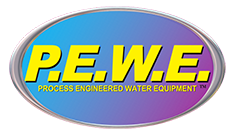 Do you know that only 3% of Earth’s water is freshwater? With the growing population, it has become more important than ever before to conserve water and more importantly reuse existing water by sending them through wastewater treatment plants. Depending on the source of wastewater, many times, a lot of chemicals like phosphate get mixed in it and this makes the water unusable for drinking and cleaning. In such cases, the water equipment should include chemical dosing to remove these chemicals.
Do you know that only 3% of Earth’s water is freshwater? With the growing population, it has become more important than ever before to conserve water and more importantly reuse existing water by sending them through wastewater treatment plants. Depending on the source of wastewater, many times, a lot of chemicals like phosphate get mixed in it and this makes the water unusable for drinking and cleaning. In such cases, the water equipment should include chemical dosing to remove these chemicals.
What is Chemical Dosing?
Chemical dosing is the process of treating wastewater with chemicals like iron, aluminum, and even some salts to remove high levels of chemical content present in it. This chemical dosing is done in controlled amounts to remove the undesirable elements from wastewater and to make it usable again.
How Does It Work?
As a first step, the operators at industrial wastewater treatment systems identify the chemicals that get dissolved in the water and create a report based on their findings. This report helps the wastewater plant operators to determine the right chemicals that should be dosed to make the water potable again. These operators have to be constantly aware of what is happening in the treatment plant and they adjust dosing levels and speeds accordingly. For example, if the wastewater contains high levels of phosphate, more quantities of iron are added to negate the impact of phosphate. Overall, they are aware of the level of chemicals present in the wastewater and do the chemical dosing accordingly.
Since such manual checking is not always possible, many companies have developed an automated system that checks the level of chemicals in the inlet stream, analyses the content, sends this data in real-time to a chemical dosing system, that in turn, automatically adjusts the speed and volume of the dosing pump located in the chemical feed station. The entire process is monitored by operators for efficiency.
What Does the System Look Like?
The chemical dosing system will depend on many aspects such as location, availability of space, nature of chemicals, size of the plant, and more. In general, though, there will be at least two chemical tanks for holding the chemicals to account for repairs maintenance. Water from the inlet streams run through many filters in the chemical dosing system. Each filter reduces the debris from chemicals and the water moves to the dosing point. This is where the chemicals from the tanks are released into the water to treat and remove the dissolved chemicals present in it. These chemicals are released at a certain speed and pressure based on the level and quantity of dissolved chemicals present in the wastewater.
Finally, the water passes through the calibration point where it is measured and if it meets the existing standards, the potable water is sent for a final chemical cleanup after which it is ready for use. If it contains any additional chemicals, the water is again sent back for chemical dosing.
These chemical dosing systems are highly efficient and this is what makes them an integral part of any wastewater treatment plant.


